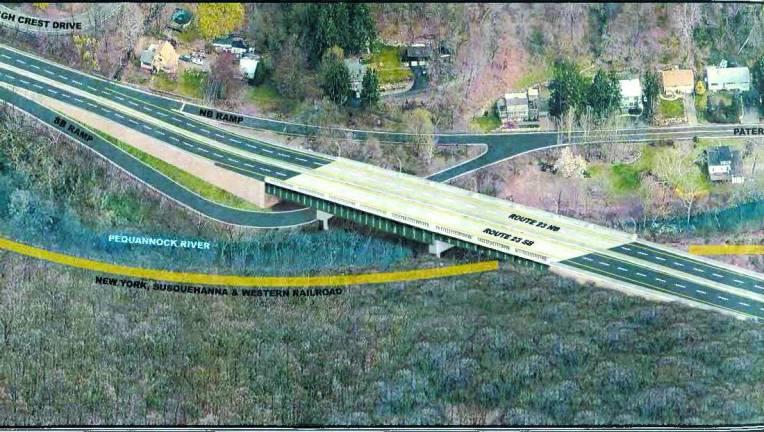Route 23 bridge work may start in March
WEST MILFORD. A $56 million project of the New Jersey Department of Transportation will replace the northbound bridge over the Pequannock River.

Work in preparation for the New Jersey Department of Transportation’s (DOT) $56 million project to replace the Route 23 northbound bridge over the Pequannock River is under way.
Heavy equipment is being used to clear property on the sides of the bridge that connects West Milford and Kinnelon.
The bridge is near an entrance to the High Crest Lake community, Hamburg Turnpike and the old village of Smith Mills.
Stage one of the construction is expected to begin in March with an anticipated finish in December, according to the Dewberry Information Center.
The bridge was built in 1968. The single-span structure is 47 feet 2¼ inches long and is 46 feet 10 inches wide.
The bridge project will replace the “structurally deficient” bridge with a cost-effective low-maintenance structure, improving the horizontal and vertical stopping sight distance. Plans call for minimizing effects on vehicular traffic during construction and minimizing environmental, utility and right of way impacts.
The project is to be completed in three primary stages, with a single lane closure in stages one and three. In stage one, the right lane will be closed, according to the DOT.
Stage two is a “no work stage” because of environmental permit restrictions for in-water work. The right lane will be open on the newly constructed eastern half of the bridge, while the left lane is open on the remaining portion of the existing bridge.
In stage three, the left lane will be closed while the rest of the existing bridge is demolished and the new structure is completed.
Based on bridge inspection reports, the bridge is rated in overall “poor” condition and is classified as “structurally deficient” because of the condition of the deck and substructure.
The road runs uphill past the bridge, which is in a sag curve. That curve means that the vertical stopping sight distance does not meet current distance design standards. Also, the guiderail and the roadway superelevation do not meet current design standards.
Habitat for the endangered bobcat and wood turtle exists on both sides of the bridge, according to the state Department of Environmental Protection (DEP).
A three-foot-wide wildlife passage will be provided along each abutment to permit those species to pass beneath the bridge.
The federally endangered Indiana bat also was identified within the project limits by the DEP, and tree clearing will not be permitted between April 1 and Sept. 30.